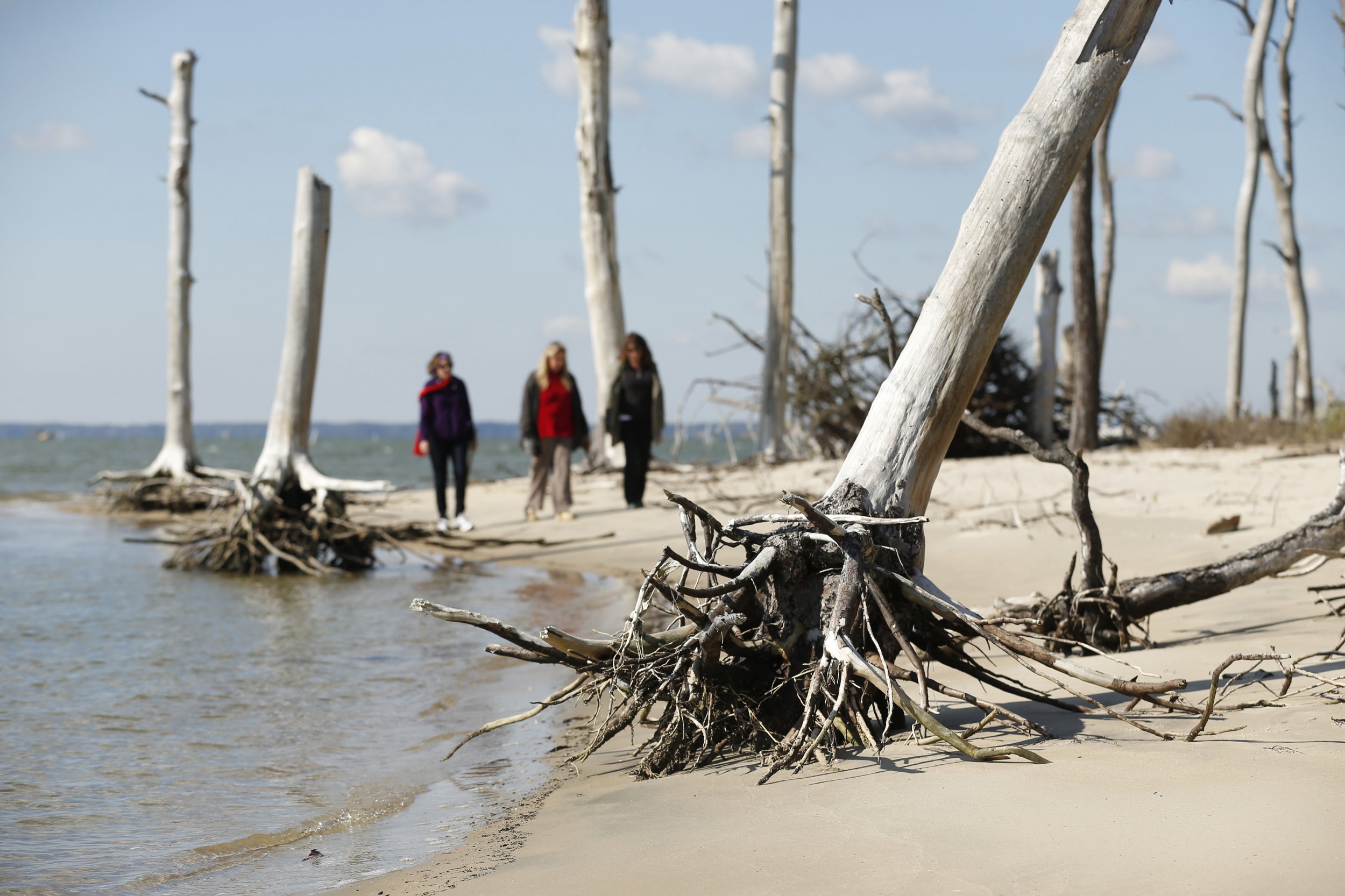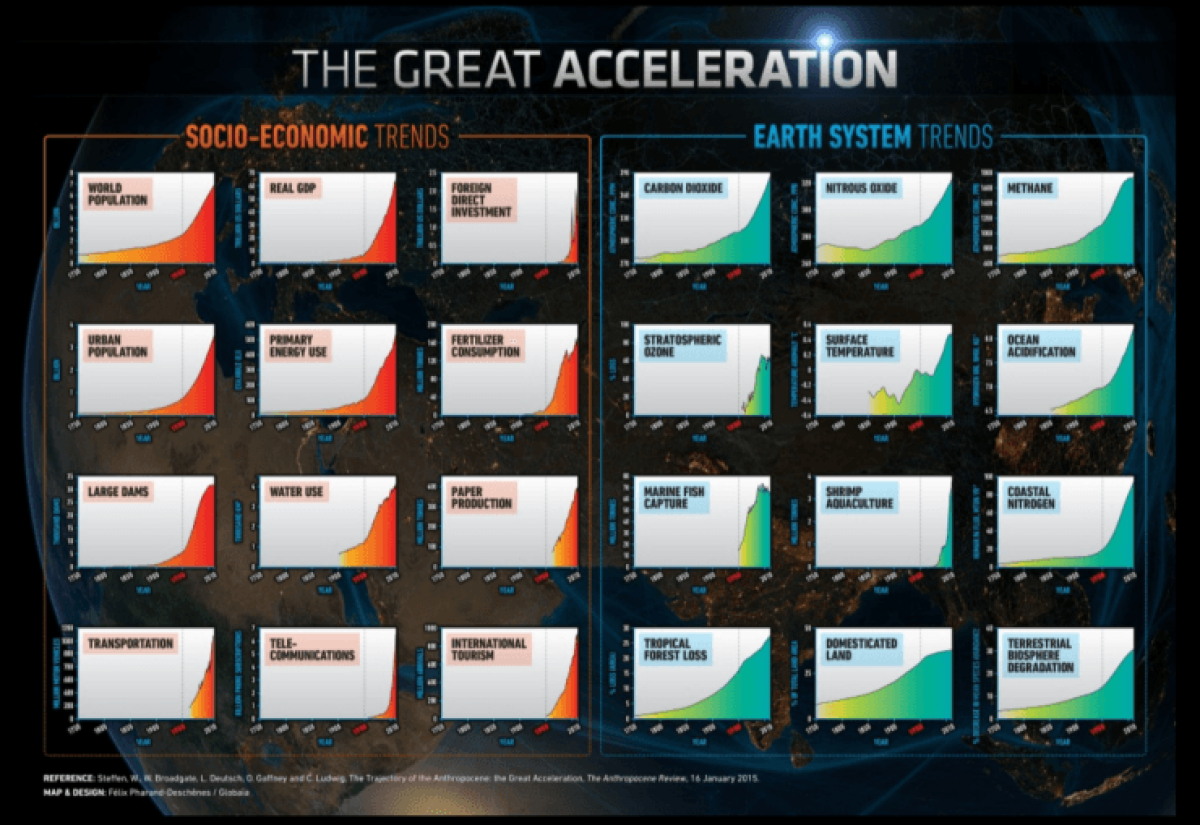
This story originally appeared on Fusion and is reproduced here as part of the Climate Desk collaboration.
The 1950s. To many Americans, the decade signifies a sort of "Pleasantville"-era jam packed with nostalgic notions of pies and drive-ins. Americana at its peak. But now, according to a group of experts, the brief period should also signify something else: The start of an entirely new geologic era defined by humankind's impact on the planet.
On Monday, the scientists recommended to the International Geological Congress, meeting this year in Cape Town, that the 11,700-year-old geological epoch known as the Holocene be cut short and replaced by the Anthropocene.
Most other geologic epochs, which are defined by world-changing events such as mass extinctions, have lasted millions of years or even tens of millions of years. But humans have found a way to disrupt the Earth's natural patterns, and many geologists think it's high time this impact be made official.
According to The Guardian, the new epoch, which should begin around 1950, "is likely to be defined by the radioactive elements dispersed across the planet by nuclear bomb tests, although an array of other signals, including plastic pollution, soot from power stations, concrete, and even the bones left by the global proliferation of the domestic chicken are now under consideration."
Yes, chicken bones could define not just our generation or our lifetimes, but our entire geologic era.
The scientists—a mix of 35 geologists, climate scientists, archaeologists, and others—are considering all these options in hopes of settling upon a "golden spike" to officially demarcate the Anthropocene's start.
According to Jan Zalasiewicz, a geologist at the University of Leicester and chair of the group, this golden spike—which could come from the ocean floor, ice sheets, tree rings, or any other enduring natural imprint—must capture the "Great Acceleration."
The Great Acceleration is not actually great in the good sense. It defines the inflection point at which a number of human-driven indicators started to shoot up off the charts, so to speak, in the mid-20th century. As can be seen on the image below (and linked here), the indicators include things like global population, water use, land use, and perhaps most significantly, fossil fuel emissions.

Courtesy of the International Geosphere-Biosphere Programme
Professor Will Steffen, a researcher at the Australian National University and the Stockholm Resilience Centre, helped compile information on the trends of the Great Acceleration. Last year he said that the most dramatic shifts have occurred since 1950, adding that "it is difficult to overestimate the scale and speed of change."
"In a single lifetime humanity has become a planetary-scale geological force," he said. "This is a new phenomenon and indicates that humanity has a new responsibility at a global level for the planet."
And it really did take a lot of power to get all this responsibility.
More than half the concrete ever produced was created within the last two decades, and enough concrete has been made to cover every square meter of the world in a kilogram of the artificial construction material. There are at least five giant gyres of plastic waste circulating in the world's oceans, with some 300 million metric tons of plastic produced annually—or enough to equal the weight of the more than seven billion people on Earth.
Species of flora and fauna are so stressed by human activities that many scientists believe the planet has already entered its sixth mass extinction. According to a report in Science, more than 75 percent of species of animals and plants could be gone within a few centuries.
Believe it or not, it's still possible to put a positive spin on all this, which is what Martin Rees, president of the Royal Society and professor of Cosmology and Astrophysics at the University of Cambridge, has done with an op-ed in The Guardian describing what he calls the "optimistic option:"
Human societies could navigate these threats, achieve a sustainable future, and inaugurate eras of post-human evolution even more marvelous than what's led to us. The dawn of the Anthropocene epoch would then mark a one-off transformation from a natural world to one where humans jumpstart the transition to electronic (and potentially immortal) entities, that transcend our limitations and eventually spread their influence far beyond the Earth.
Even in a cosmic time-perspective, therefore, the 21st century is special. It marks our collective realization that the Anthropocene has begun – and it's a century when human actions will determine how long that epoch lasts.
It took the 35-person working group seven years of deliberation to make the historic vote (which passed 30-to-three with two abstentions ) and decide that it's time to mark the transition to the Anthropocene. It will likely take at least two years for the three other academic bodies required to ratify the change to weigh in and finalize the adoption.
Uncommon Knowledge
Newsweek is committed to challenging conventional wisdom and finding connections in the search for common ground.
Newsweek is committed to challenging conventional wisdom and finding connections in the search for common ground.
About the writer
To read how Newsweek uses AI as a newsroom tool, Click here.








